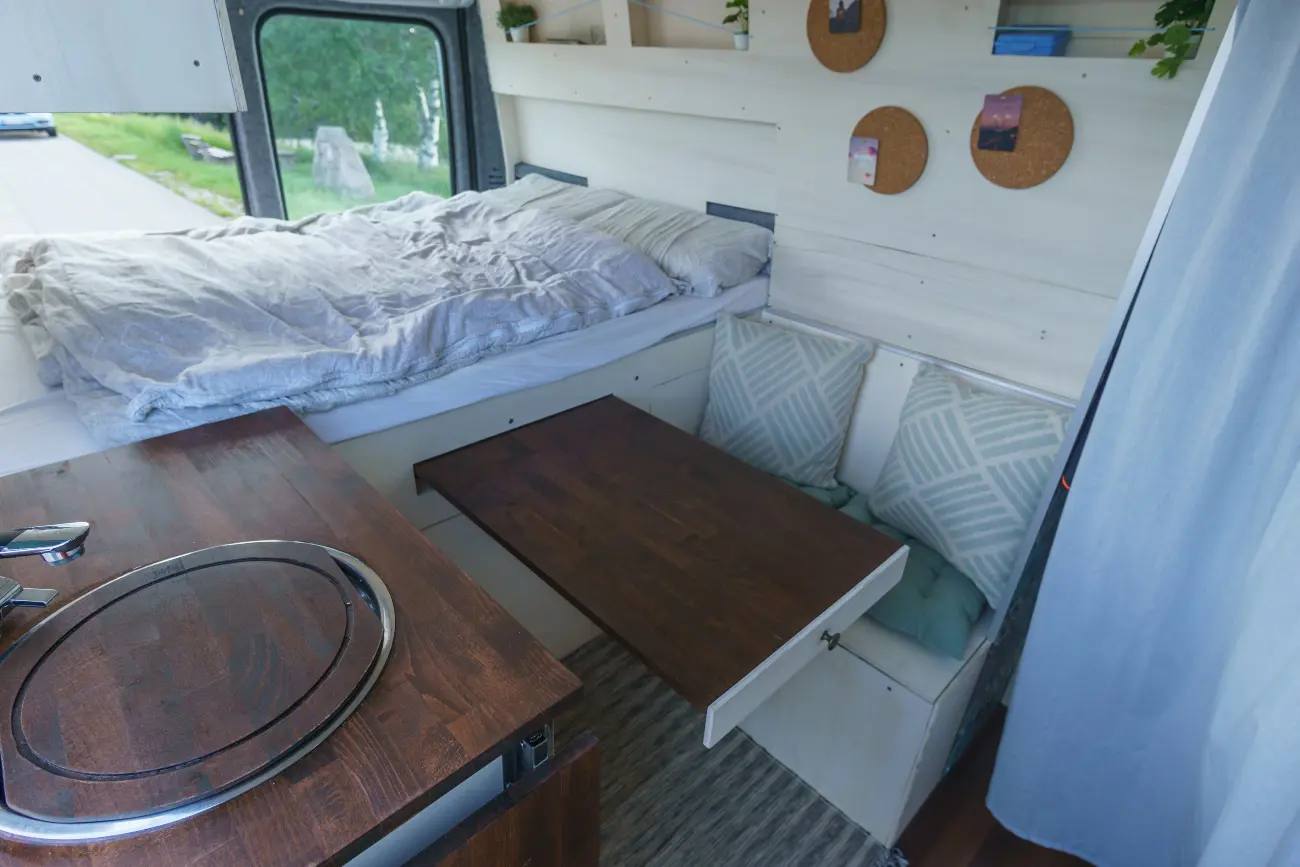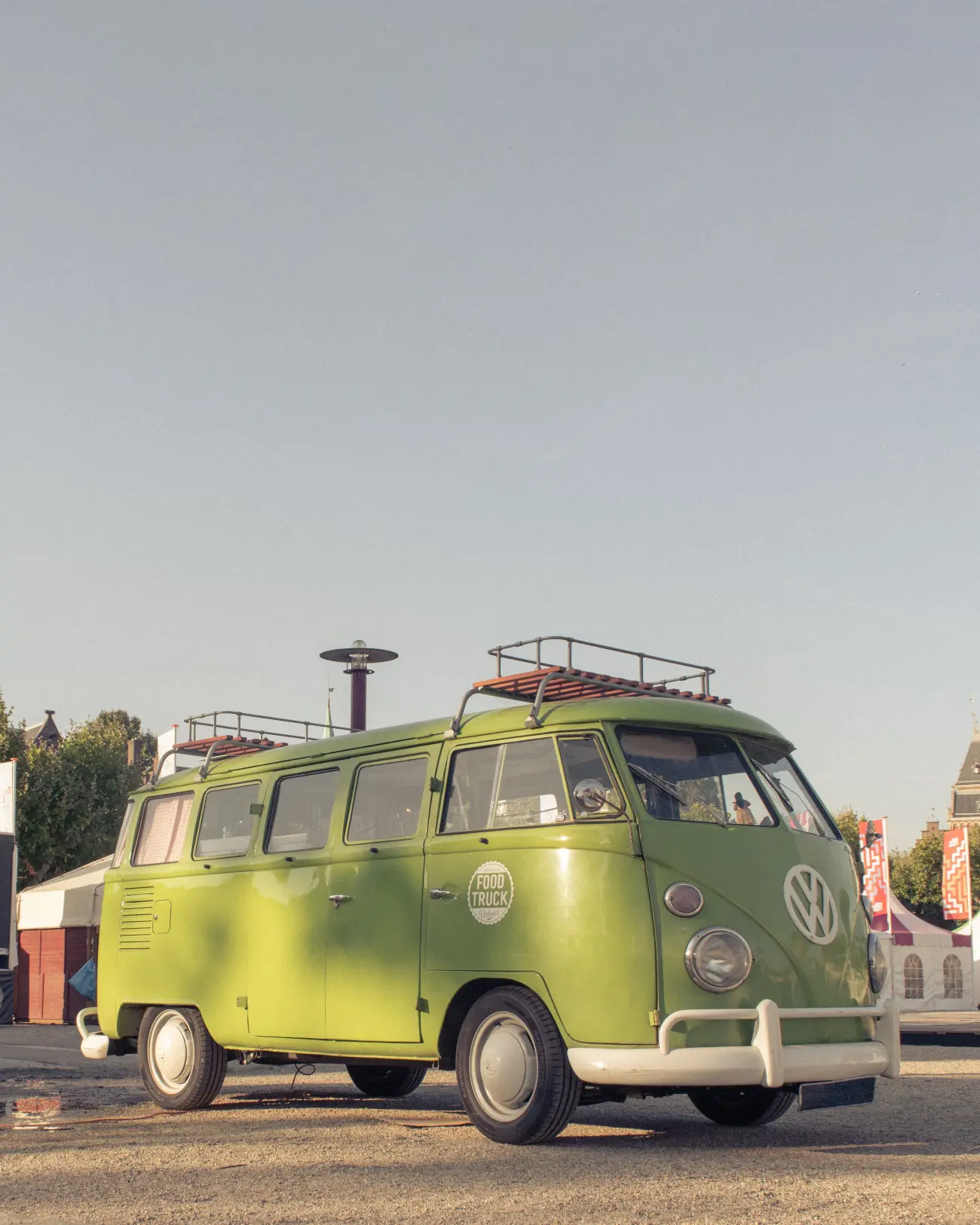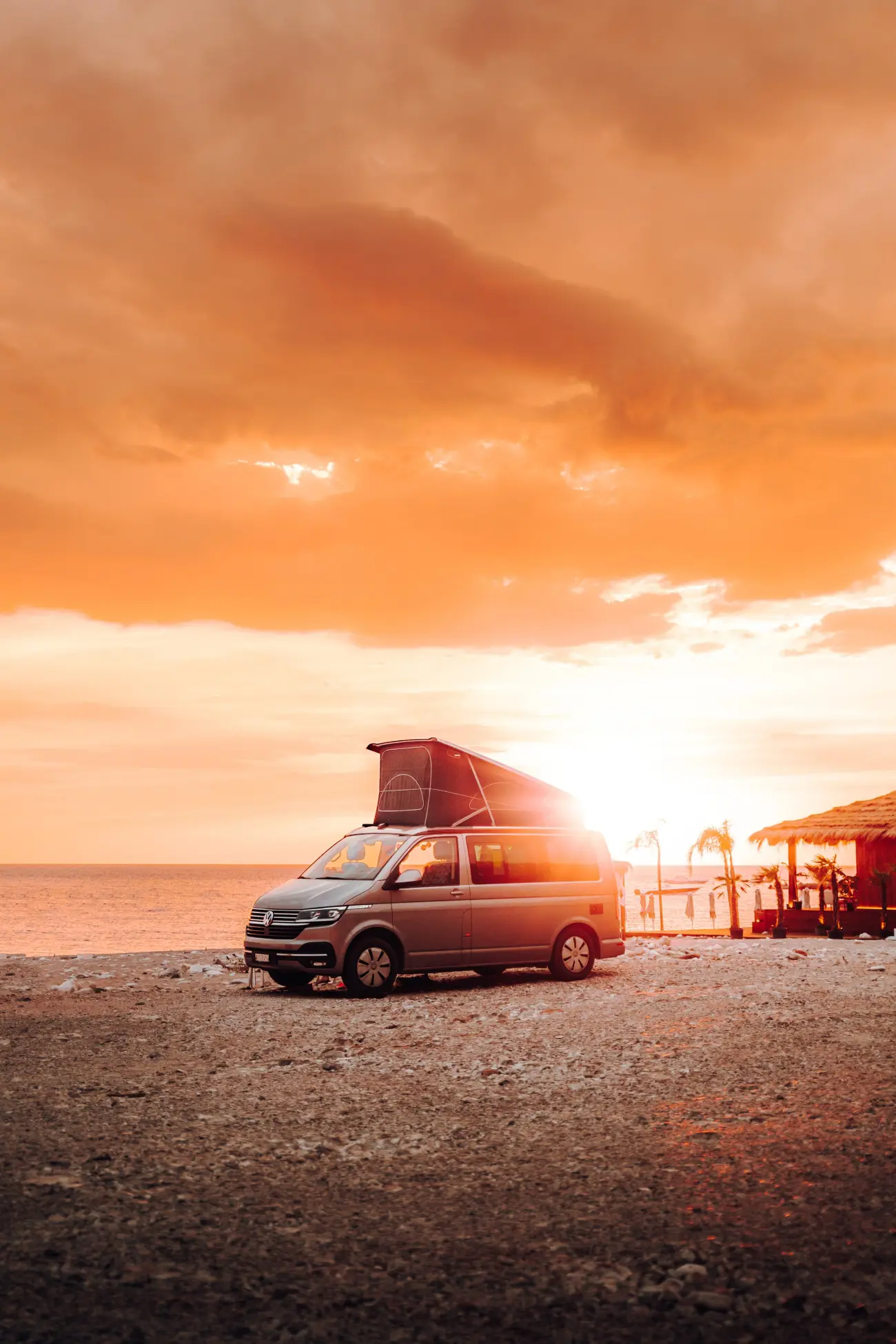27 tips for self-build campervans
25 August 2022
More and more campers are fitting out their own vans these days. And the good news is that, with a bit of patience, a methodical approach, and the right expertise or contacts, kitting out your own campervan from scratch is entirely possible.

You have a range of options here. The most basic conversion can consist of a mattress, gas stove, portable toilet and a water canister, fitted into the back of a panel van. At the other extreme, you can go relatively palatial, with electricity, plumbing, soft furnishings, myriad lighting solutions and more.
Here are some top tips for a successful campervan conversion project. Remember to set out clearly what you want from your ideal van; work through your task list methodically; and seek help with any parts where you don’t have the right expertise.
We’d also urge you to arrange some self build campervan insurance, to start from the very day you acquire your ‘project’ van.
Contents
- Work out your requirements
- Think about your layout
- Decide on a budget
- Factor in how much time you’ll have
- Soak up ideas and inspiration
- Decide what sort of bathroom you want
- Let’s talk toilets
- Choose the right fridge
- Itemise everything else you’ll need
- Be methodical
- Consider a campervan conversion kit
- Vintage or square-sided van?
- Some good square-side options
- Buying a used van?
- Check mileage
- Insulate
- Get curtains
- Ventilate
- Get the tight storage system
- Use what you’ve got
- Consider copper
- Electricity
- Be creative
- Make it homely and welcoming
- Have a mix of lighting
- Secure everything
- Try a hire first
1. Work out your requirements
Before you dive headlong into the wonderful but sometimes bewildering world of campervan conversions, think hard about exactly what you want from your van.
One key point to consider is: how many berths will you need?
How many people will be using the van?
You might, for example, find that you have more passengers by day than sleepers at night, as kids may be more than happy to sleep in a tent alongside. Think, too, about, what sort of campers you’ll be.
Will you go off-grid, or will you prefer well-equipped campsites? If the former, you’ll need to have a few more things on board.
2. Think about your layout
Try to visualise the living space, and what you want to fit into it. There are visualisation programmes out there, such as vanspace, that can help you envisage how it could all look.
Work out what your absolute essentials are, and which things are more of a nice-to-have. If you’re planning to rent your campervan out to paying customers, you may want to go for a certain style that will help your vehicle stand out from the crowd. And, by the way, if you are planning to hire it out, check with your provider whether this is included in your self build campervan insurance policy.
3. Decide on a budget
Don’t forget to include the initial cost of the van itself, if you don’t already have one, plus the materials and – if applicable – labour costs for all the changes you want to make.
Lastly, remember to include the costs of self build campervan insurance, which you should have in place from the day you start work on the vehicle.
4. Factor in how much time you’ll have
Campervan conversions can be demanding work, so make sure you pick a project that you can realistically achieve within a given time. Unless you’re the patient sort, it can get a bit dispiriting having a half-finished campervan sitting on the drive for months on end.
Calculate the time you think you’ll need, and add in a little more for good measure. And consider whether you have the budget to get any of the work done by a specialist.
5. Soak up ideas and inspiration
Self builders love to show off their vans, so you won’t be short of visual ideas online.
Type ‘campervan conversions’ into Pinterest, Instagram or Facebook and you’ll be met with a wealth of photos and helpful details.
We also like Camplify’s blog pages on van conversion and interior ideas.
6. Decide what sort of bathroom you want
Will you want a shower, or will a simple camping toilet be all you require? This decision will come down to space in the van, your budget and, again, what sort of campervan lifestyle you’re envisaging.
If you’ll be spending a lot of your time off the beaten track, you may well be glad of a shower on board. If, on the other hand, you’ll spend most of your time at campsites with good facilities, a shower becomes much less crucial.
7. Let’s talk toilets
You have various options here. If you need to keep things basic, you can opt for a simple camping toilet or Porta-Potti, which you can then empty out at any campsite with its own chemical disposal unit.
But you may prefer a built-in campervan toilet, in which case you’ll need to factor in some plumbing space plus enough space for separate tanks for liquid and solid waste.
8. Choose the right fridge
Will one sitting on the worktop be sufficient, or will it need some floor space?
Once again, this depends on what sort of camping you’ll do – if you’ll be away from habitation for any length of time, you’ll probably need a decent-sized fridge.
On the other hand, a compressor fridge is an excellent, energy-saving option, as it will only take power from your campervan battery once the fridge rises above a certain temperature. Lastly, if you’re only planning short trips in your van, a simple thermoelectric coolbox may be the smart choice.
9. Itemise everything else
For example, if you’ll be travelling for days at a time and will need to check in with work, you may need a table or desk to sit at.
Write a list of everything you want to include in the van, and use this to sketch out a floor plan, which will show how it might all fit together.
You can then use masking tape or cardboard cutouts in the van to check whether it’s all going to fit!
10. Be methodical with your project
You really don’t want to have to go back several steps – say, pulling down a set of wall panels because you forget to install electricity or water pipes.
Make a coherent, step-by-step plan before you get started.
11. Consider buying a campervan conversion kit
Clearcut Campervan Design is an excellent source of help and information, from entire fitted conversions via parts to how-to guides.
12. Vintage or square-sided van?

Think carefully about what size and shape of van may be the best basis for your conversion. Many people’s dream camper will probably be the iconic, old-school VW Campervan, in either T1, T2 or T3 guise (we discussed the various generations of classic VW camper in our piece on the different types of classic campervan).
And it’s true that these classic ‘Vee Dubs’ will make for very beautiful and desirable holiday vehicles. However, if you’re going to be spending lengthy periods of time in your van, a more modern, square-shaped van may offer more storage space.
13. Some good square-sided options
Recommendations for a contemporary square-sided van include the VW Transporter, Peugeot Boxer or – if you need more space – the Mercedes Sprinter.
The latter is also available in 4x4 format if you really want to hit the wilds in your van.
14. Buying a used van?
If you’re buying a used van to convert, there are a few crucial checks you should always make before committing to purchase.
Check, for example, that the vehicle has a full service record, and monitor any rust spots – including the floor and side panels.
15. Think about mileage
You’re probably going to want to cover a fair few thousand miles in your van, so the fewer it’s already done the better.
Again, budget comes into play here - £5,000 should get you a serviceable used van, but if you want something newer – say, three to five years old – with fewer miles, you’ll need to find around £10,000.
16. Insulate
If you’re going to be touring the UK, you’ll definitely need some insulation to keep you warm at night. Insulation will keep the warmth in and the cold out.
Sheep’s wool is a luxury choice: thermal foam or polyurethane boards are a more realistic and perfectly adequate compromise.
17. Curtains
Curtains will also help to keep the warmth in around your van’s windows. They’ll keep the early morning light out, too.
You’ll be waking with the sunrise otherwise, so curtains or even blackout blinds are essential for a good night’s sleep on the road.
18. Ventilate
Damp and mould can prove formidable enemies in a campervan, producing an unpleasant smell and causing materials to gradually deteriorate. The easiest solution here is to cut some holes in the side of your van and install some louvred air vents.
You can also cut out a vent in the roof. A final option is to install a pop-up roof, which will give you more sleeping space as well as better ventilation.
19. Get the right storage system
You’ll need plenty of storage, and it should be hard-wearing and easy to clean. Euro containers are a great solution as they are cheap, easy to find, and – being plastic – both tough and easily cleaned.
Just the thing for dumping some dirty walking boots or wet outdoor gear in.
20. Use what you’ve got
You may find that you have a number of items sitting around not doing very much at home, which can perform useful functions in the van. An old spice rack, for example, can be transformed into a phone and gadget holder.
Or how about a stretch of gutter, clipped to the wall above the bed for storing toilet paper, lanterns and all the other kit every van lifer needs?
21. Consider copper
Copper piping is very much the thing for the modern campervan. Aside from looking beautiful, it’s cheap and readily available. Taps, curtain poles, even an iPad stand for a cosy film evening – copper can play a lot of different roles.
22. Electricity
You could do without it, but electricity will make van life a whole lot more enjoyable, especially for extended spells on board. It’ll give you lighting, a fridge, device charging, and a dozen other little comforts that really will give your van the ultimate ‘home on wheels’ factor.
If your budget stretches to it, solar panels may be a good idea here, giving you the option of off-grid adventures.
We’d recommend getting an expert to do the electricals, by the way.
Not least because they’ll be able to provide an Electrical Installation Certificate. Your provider of self build campervan insurance may also need to see a certificate to show that the work has been done to a professional standard.
23. Be creative
So many everyday and overlooked items can fulfil useful and even attractive functions inside your van. Yes, we’re talking about using recycled pallets for shelves – but why not also give an old ceramic bowl or galvanised bucket a new lease of life as a sink? As long as they’ve got some decent plumbing underneath, they’ll do the job – and look truly individual, too.
24. Make it homely and welcoming
Remember to create somewhere you’ll want to spend time. At the end of a long day’s travelling, walking or surfing, you’ll need somewhere homely and welcoming.
Why not decorate your walls with attractive fabrics, or paint them with blackboard paint so that you and the family can draw, write lists and itineraries, etcetera?
25. Have a mix of lighting
A nice mix of lighting will also go a long way towards giving your camper a homely feel.
A mix of dimmers, fairy lights, candles, over-the-bed lighting and more will make the place seem very cosy, and give you different options for different activities, moods and times of the day.
26. Secure everything
All your fixtures, fittings and final touches may look beautiful as you step into your parked van: but remember, you’ll be taking them all on the road with you. So make sure everything is firmly secured.
Carry some spare bungee ropes to tether anything down that may be at risk of moving around while you’re heading off into the sunset.
27. Try a hire first

If you’re stumped on what’s going to work for you and your van, why not try hiring a campervan for a week?
Take it on the kind of trip you want to make in your own van, and make a note of what features you love; what you could do without; and what you’re really missing.
Last but not least, make sure you have some specialist self build campervan insurance right from the start of your project.
Here at Lancaster, we’ll be able to arrange the self build campervan insurance to suit you and your project.
Why not contact us for a quote?
